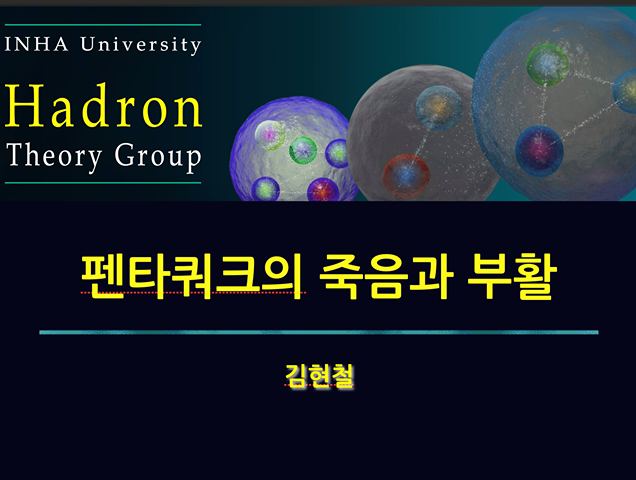Killing or Saving Pentaquarks
Hyun-Chul Kim1, ∗
1Department of Physics, Inha University, Incheon 22212, Republic of Korea
(Dated: November 27, 2020)
In 2003, when the pentaquark Θ+ was found by the LEPS Collaboration in Japan first time in history and was confirmed by a series of other experiments including the CLAS Collaboration, physics community was enraptured at the finding of this particle. Tons of theoretical papers were followed to explain the characteristics of that five-quark baryon and its properties. Interestingly, however, several experiments at high energy did not see the evidence of the Θ+. In 2006, the situation underwent a sudden change by the CLAS experiment, which obtained only the null result. So, the Θ+ disappeared! Several other experiments tried very hard to find it but the conclusion was the same as what the CLAS experiment did. On the other hand, the LEPS II experiment and the DIANA Collaboration continued to report the existence of the Θ+. Nevertheless, the majority believe that the Θ+ does not exist. So, the bell was tolled for the death of the Θ+.
In the meanwhile, a narrow bump structure or a narrow nucleon resonance N∗(1785) was found first time by Kuznetsov et al. from the GRAAL experiment of η photoproduction off the quasi-free neutron. This bump structure was undisputably confirmed by the LNS at Tohouku University, CB- ELSA in Bonn, A2 Collaboration at MAMI in Mainz University. In the proton channel, the narrow bump-like structure can be seen only poorly. This is often called “neutron anomaly”. Whether this narrow bump-like structure is a hidden pentaquark or not is still under debate.
Thunderous applause was heard from the other side. The LHCb Collaboration announced the existence of the heavy pentaquark, which consists of three light quarks, and a charmed and an- ticharmed quark pair. Newspapers and TV reports publicized the heavy pentaquark Pc. Moreover, the LHCb Collaboration reported the new findings of the five excited Ωc’s among which the two Ωc’s have very narrow widths. The narrowness is one particular feature of the pentaquark baryons. So, two of them can be theoretically interpreted as pentaquarks.
In this Colloquium, I will briefly review the history of the Θ+, N∗(1685), the heavy pentaquarks, and excited Ωc’s. Then I want to suggest an ultimate and golden experiment that can be performed at the J-PARC.

